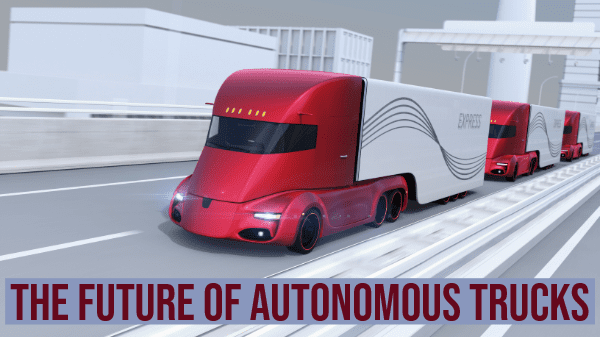Autonomous trucking offers opportunities for trucks to be more productive, which is especially compelling in the perishables industry with tight delivery windows.
“It’s not like a dry product you can bring in days before and have it staged,” said Kevin Small, founder and CEO of Agri-Fresh Inc., BB #:342499 a produce hauler based in Lockport, MB, who already feels pressure from customers to cut delivery times. Some are asking for team drivers for a faster turnaround, with no stops.
“All we can offer is as fast as a single driver can get there, we don’t run teams at Agri-Fresh.”
Small and Kenny Lund, vice president of support operations for Allen Lund Company, LLC, BB #:107465 based in La Canada, near Los Angeles, can see the advantages autonomous driving would offer if a single driver could be sleeping in the back as the truck cruises down a highway.
With drivers no longer having to stop to sleep, Lund envisions a cross-country trip that takes 4.5 days now being cut to 2.5 days. Costs would decrease, too. “If you allow all solo drivers to act like a team, the cost of transportation would drop,” he said.
Ports and hubs
In his report on driverless trucks, Steve Viscelli, a sociologist at the University of Pennsylvania who studies work, labor markets, and public policy related to freight transportation, automation, and energy, foresees a future where trips are divided between autonomous trucks that can be almost constantly on the highway and local human drivers.
This is supported by McKinsey & Company’s report: if autonomous trucks are able to traverse highways continuously, operating costs would fall sharply—by as much as 45 percent; this, in turn, would usher in savings of between $85 and $125 billion for the transportation and logistics industry.
A likely scenario, in Viscelli’s view, would have human drivers bring trailers from factories or warehouses to autonomous truck ports situated near major interstate exits. Drivers would switch trailers to autonomous trucks that would embark on long highway trips.
At the other end, another human driver would pick up the trailer at a subsequent truck port and complete the journey. This isn’t much of a stretch from current reality, since a number of firms already arrange and handle multiple, short-distance hauls.
C.H. Rivas, LLC, BB #:166527 a local consolidator and distributor based in Nogales, AZ, handles its deliveries in a similar manner.
Christian Rivas, managing member, doesn’t believe autonomous trucking will usher in great change, or have a negative impact on his business.
“I don’t see autonomous trucks picking up locally,” he notes. “My business might actually increase.”



